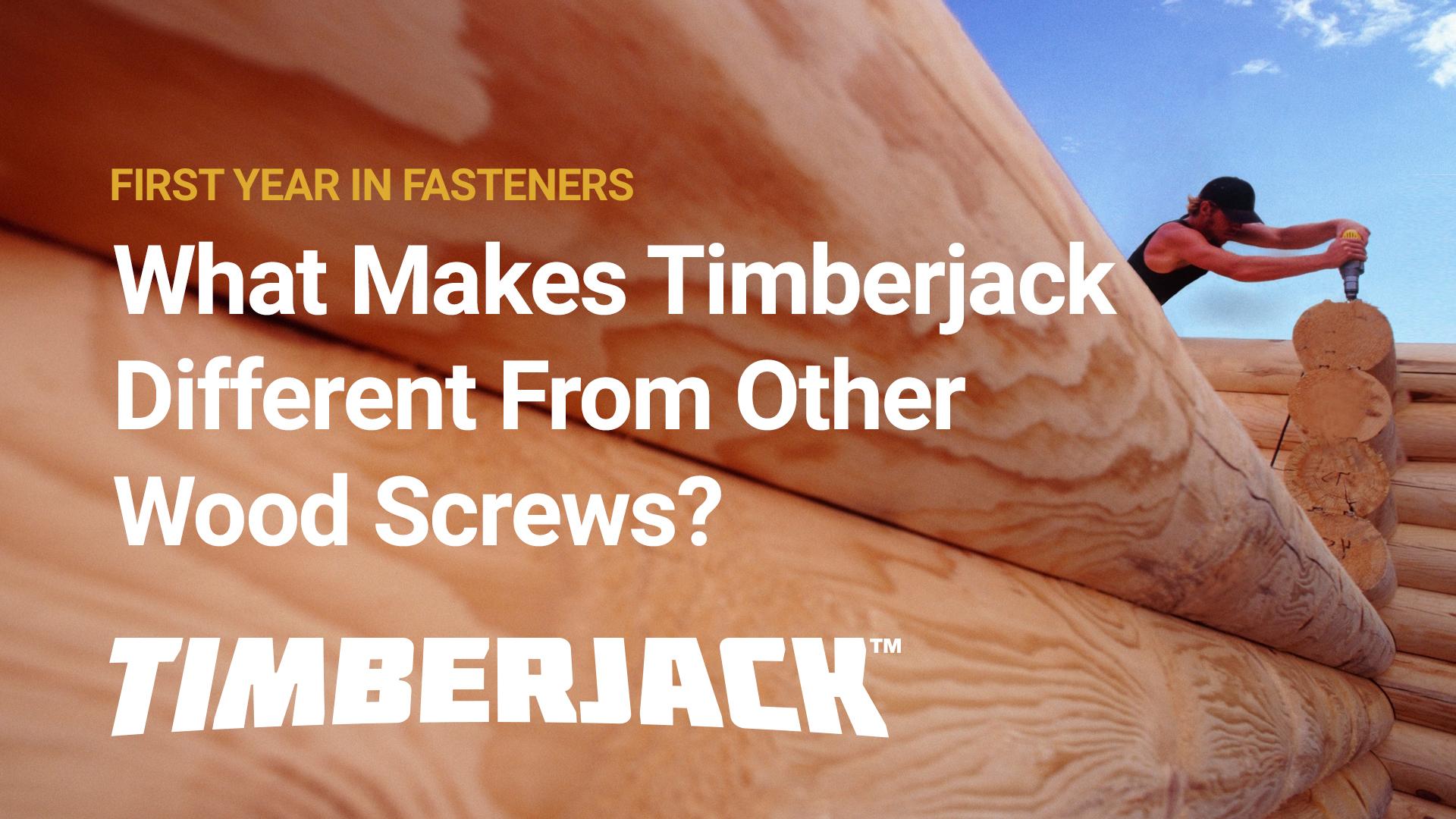
What Are The Differences Between Standard Wood Screws and Timberjacks?
Wood screws have a variety of uses and are usually bought in bulk for cheap. The problem is, with the cheaper wood screws, there’s a greater chance for the screw to pull out, back out, or pull through.**
Earnest Machine developed what we believe is the Cadillac of wood screws, called Timberjack screws. While traditional wood screws come at a great cost, they do have drawbacks in their design. One problem with traditional wood screws is you have to drill a hole before using your screw. With Timberjacks, we included a self-piercing point which helps the screw enter wood easier. Timberjacks also have an epoxy coating that withstands contact to pressure treated lumber and allows the screw to penetrate the wood smoother.
Other features included in Timberjacks are special locking “U” threads, which helps resist pull out. Additionally, this screw has wide threads to put as much wood between the threads as possible.
Timberjacks have a hex washer head, and while some might prefer a flat head in projects to make the screw flush with the wood, the hex washer head can be a positive for some because it lessens the chances of pull through.
Because of all the features Timberjacks have, they’re a little more expensive than a standard wood screw. So why use them? Honestly, we don’t believe they need to be used in every wood screw application, however Timberjacks are perfect for structural uses in decks, log cabins, and fencing. The durability and stability of Timberjacks means you can feel confident that the screw will last for the life of the structure.
**Helpful Definitions
Pull Out: When the wood itself fails to hold the screw in. This occurs when the wood isn’t strong enough to support the threads. The wood is considered weaker because the threads are too shallow.
Back Out: Wood expands and contracts with moisture and wind. With expansion and contraction, the screw can unscrew itself. This is why more homes these days use screws instead of nails as part of their structure – with flooding and hurricanes nails loosen easier than screws.
Pull Through: In addition to Back Out, expansion and contraction can cause Pull Through, which instead of the screw coming loose and falling out, the screw instead is drawn further into the wood. The Hex Washer Head design of the Timberjack screw mitigates the chances of the screw pulling through the wood.
